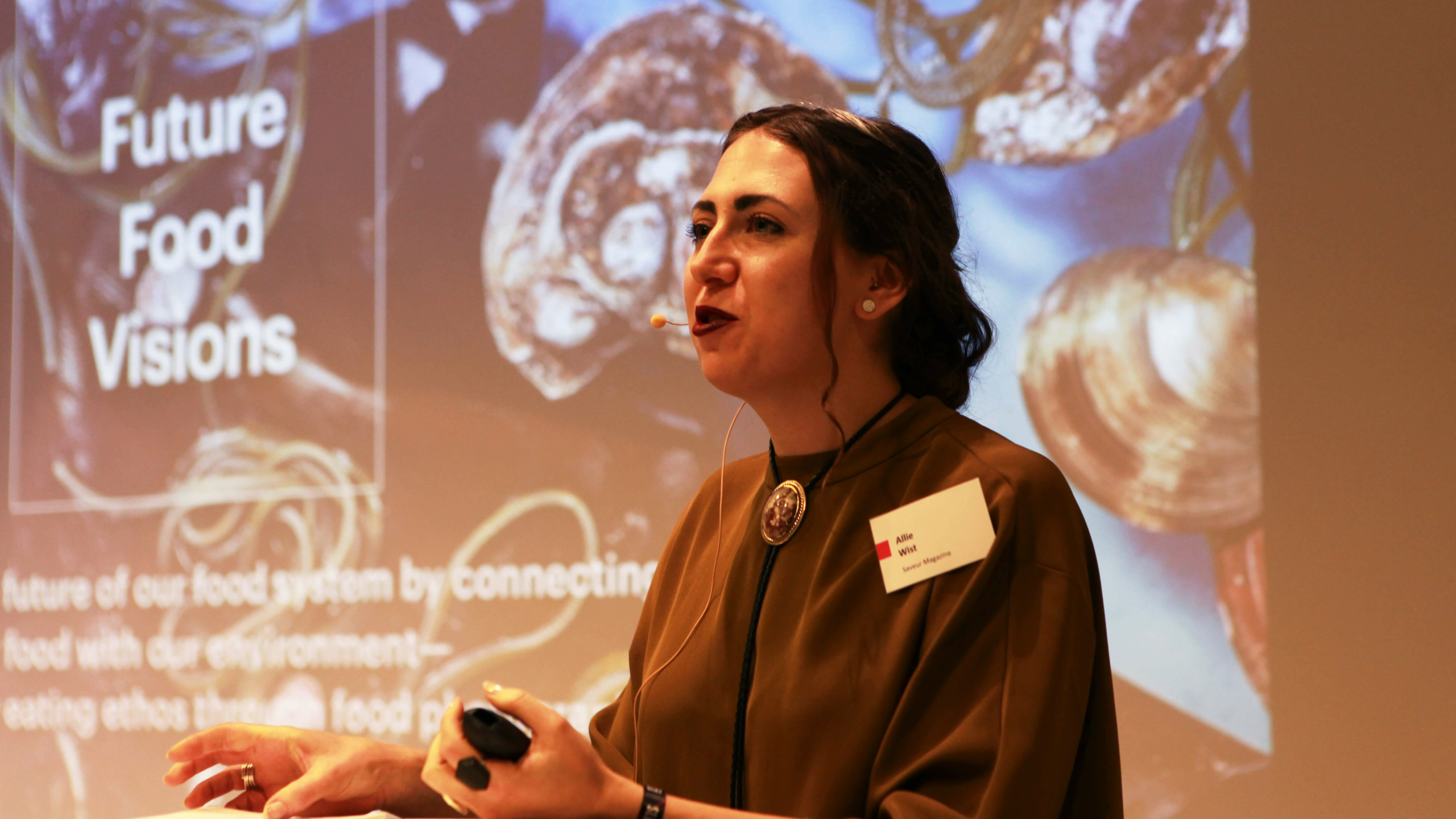Sitra hosted a special side event on the future of circular food during the first evening of the high-tech startup conference Slush. Entrepreneurs, business executives, policy makers, artists, farmers and chefs all came together to discuss the problems with our current food systems and what answers we have available.
Mari Pantsar, Director of Carbon-Neutral Circular Economy at Sitra, laid the problem bare.
“About 31 per cent of all food goes to waste,” she said. “Think of all the fossil fuels which went into growing and harvesting crops, all the subsidies which went to farmers, all the logistics and packaging. This is stupid waste. This is a sustainability crisis.”
A solution to this emergency is to bring circular economy principles to our food system. This means increased efficiency, sustainability, diversity in food sources, new business models, wide-ranging partnerships and turning food “waste” into a resource.
Finish your crickets, or you can’t have any algae
Allie Wist, Art Director at Saveur magazine, delivered the keynote address, explaining how the future of our food systems can be reconciled with food traditions and the environment.
“Today our Western diet is extremely homogenised and is based on three main sources: corn, soy and wheat,” she said. “We have a lack of biodiversity in our environment and in our diet. Also, we used to be hunter-gatherers, but today we can’t source our own food. We have lost this plant knowledge.”
Wist praised Finns for still maintaining some of these traditions, such as gathering berries and mushrooms in the forest. One of her photo projects focused on underutilised food sources in her native New England, such as dandelions, chickweed, jellyfish and kelp.
Sitra also served guests unusual food sources, such as smoothies made of oats and spruce oil, cheese covered with algae, and cricket pizza.
Finland recently approved insects for human consumption, which provide protein with a much lower ecological burden than red meat. Finland’s Minister for Housing, Energy and the Environment Kimmo Tiilikainen promised to continue cutting red tape to encourage innovations in the circular economy, such as allowing the sale of insects for food.
Action, not words
A number of entrepreneurs were present at the event to explain how their solutions are bringing us closer to a circular economy for food. Robert Jordas of Robbes Lilla Trädgård has developed a super-efficient vertical garden to grow lettuce and herbs.
“It is important to grow food locally to reduce transportation expenses and involve local people,” Jordas said. “We can do it with 50 per cent less energy and 50 per cent higher yields than traditional greenhouses.”
Restauranteur Esmee Jiskoot takes the idea of circular food quite literally in her popular Amsterdam restaurant De Ceuvel.
“We make sustainability accessible,” she said. “We cook on biogas from food waste. Phosphorus is recaptured from the urine of our guests, which goes to fertilise the fields. This is local, urban farming – primarily plant-based, which is better for the environment than meat.”
The attendees at the event stressed again and again that these are not merely plans or ideas. Politicians, entrepreneurs and major companies are taking action to make the idea of circular food a reality.
“We have the solutions to combat climate change with the circular economy,” said Hanna Mattila, Specialist, Circular Economy at Sitra. “But we need partners to do it. Let’s go circular together!”

















Recommended
Have some more.